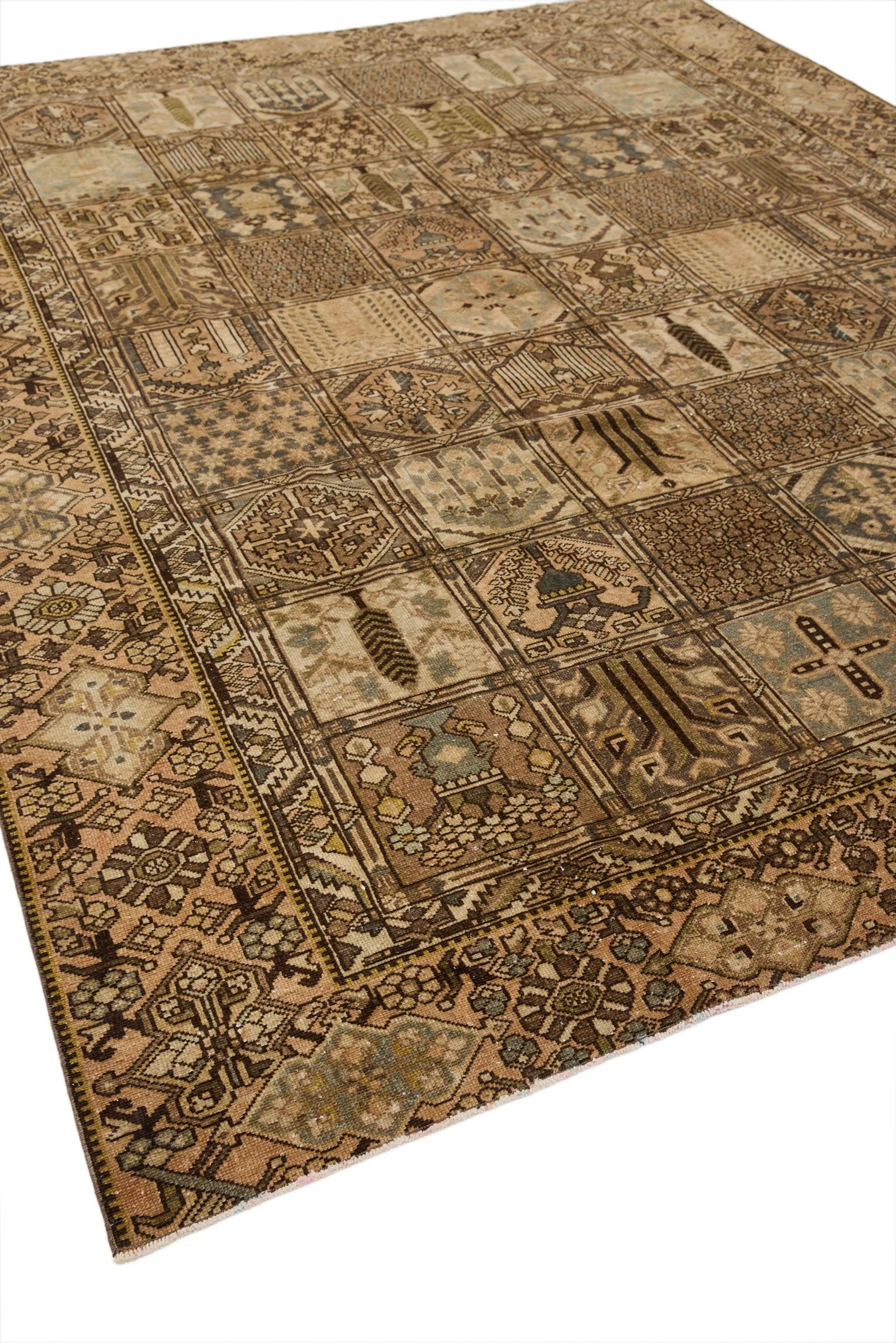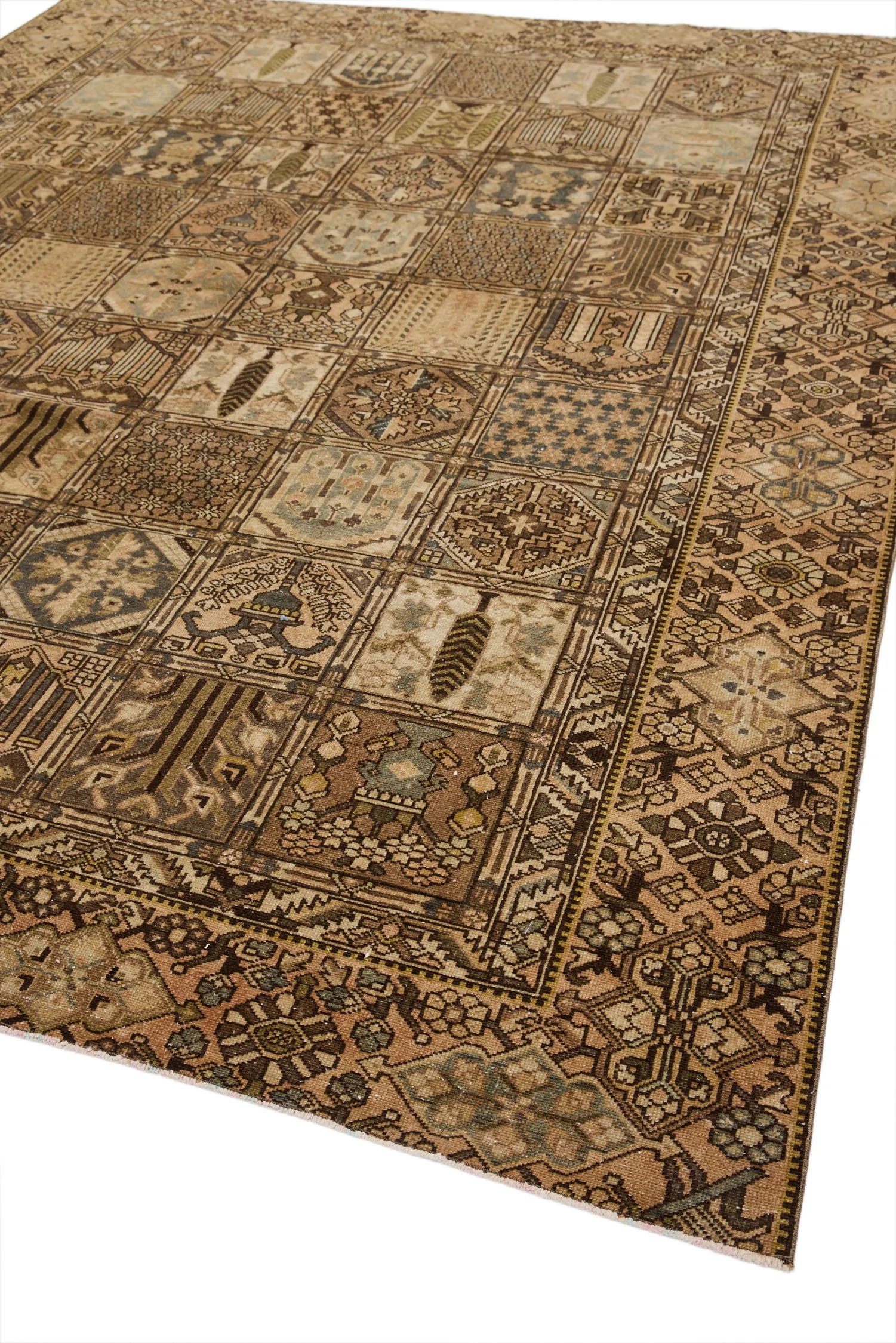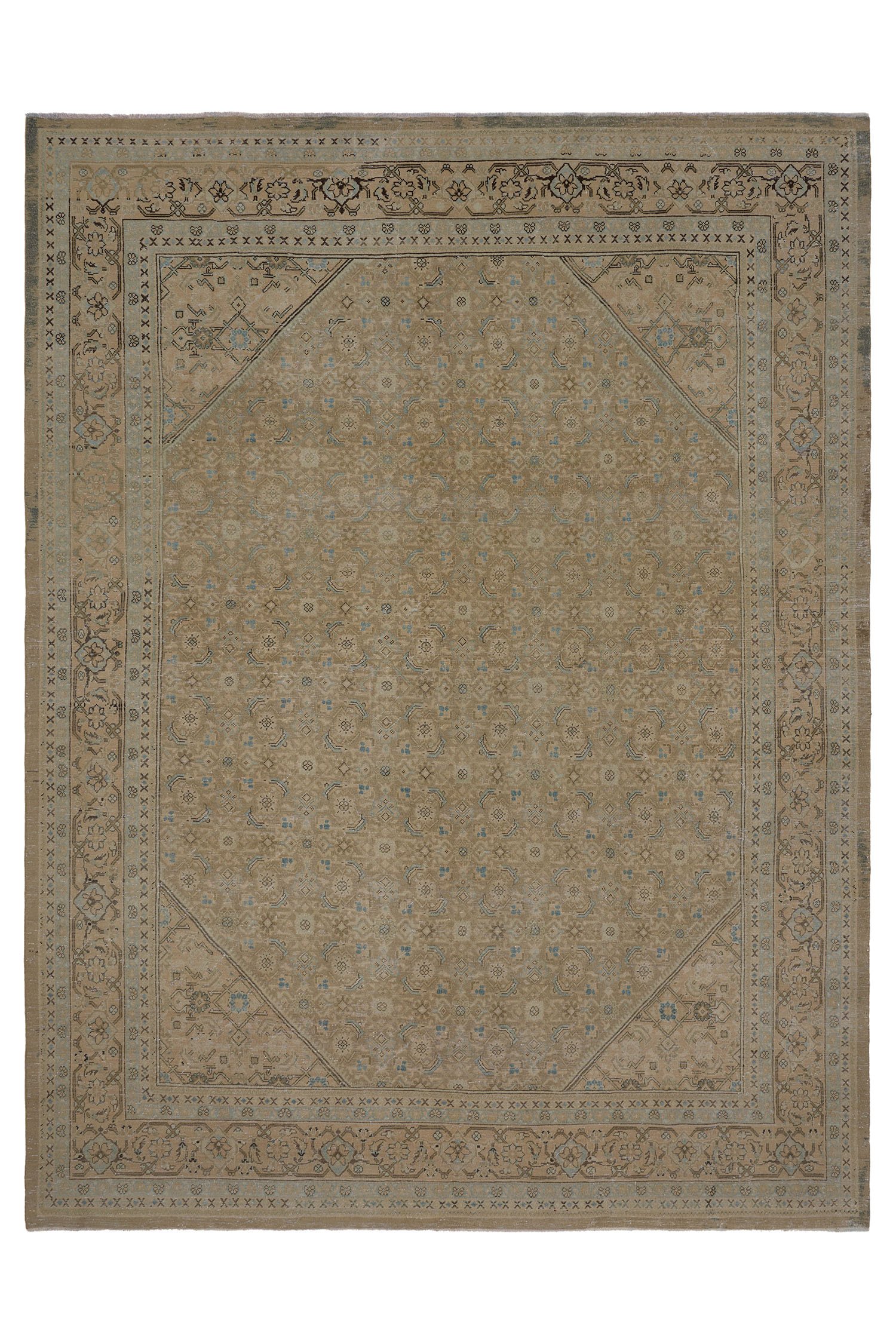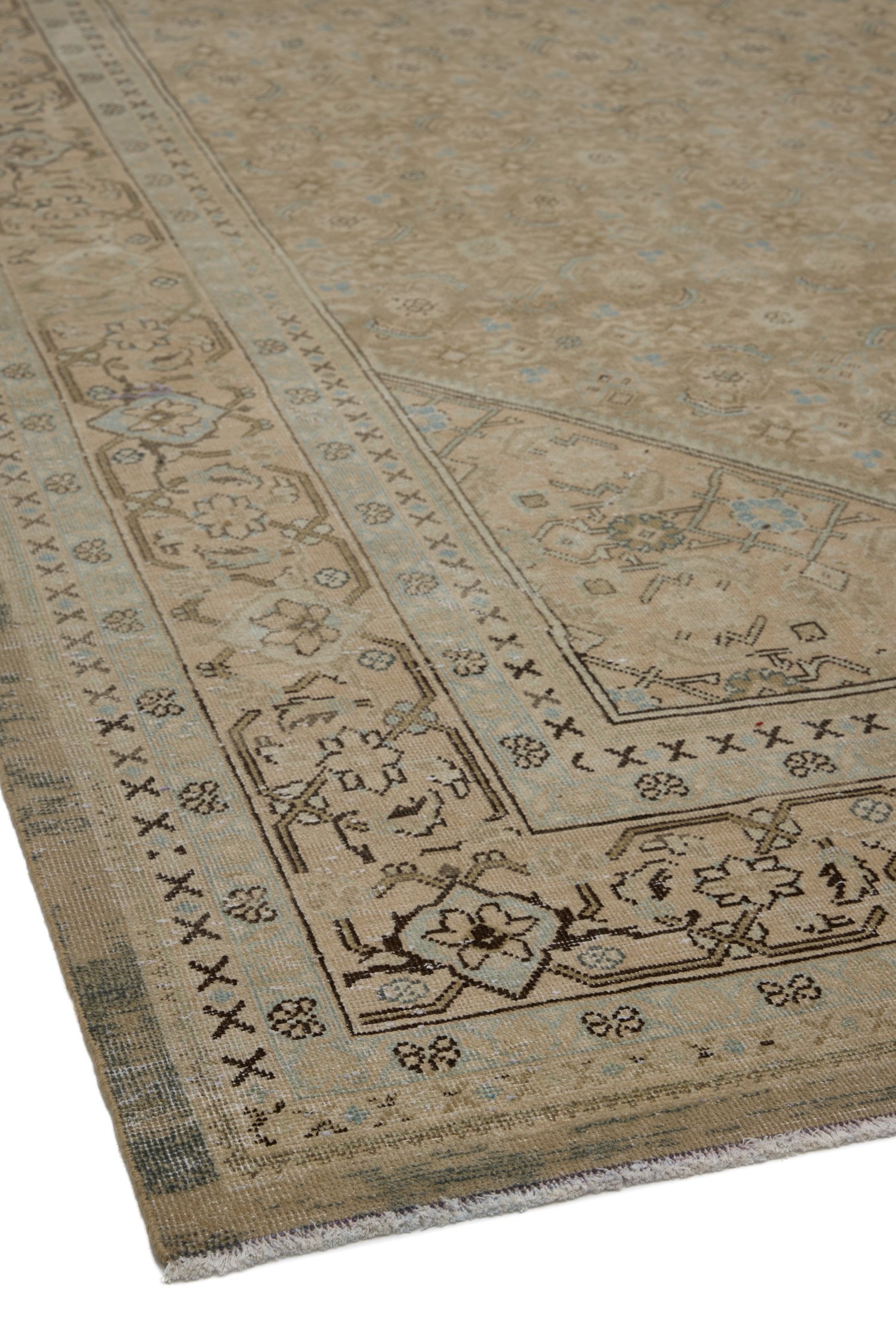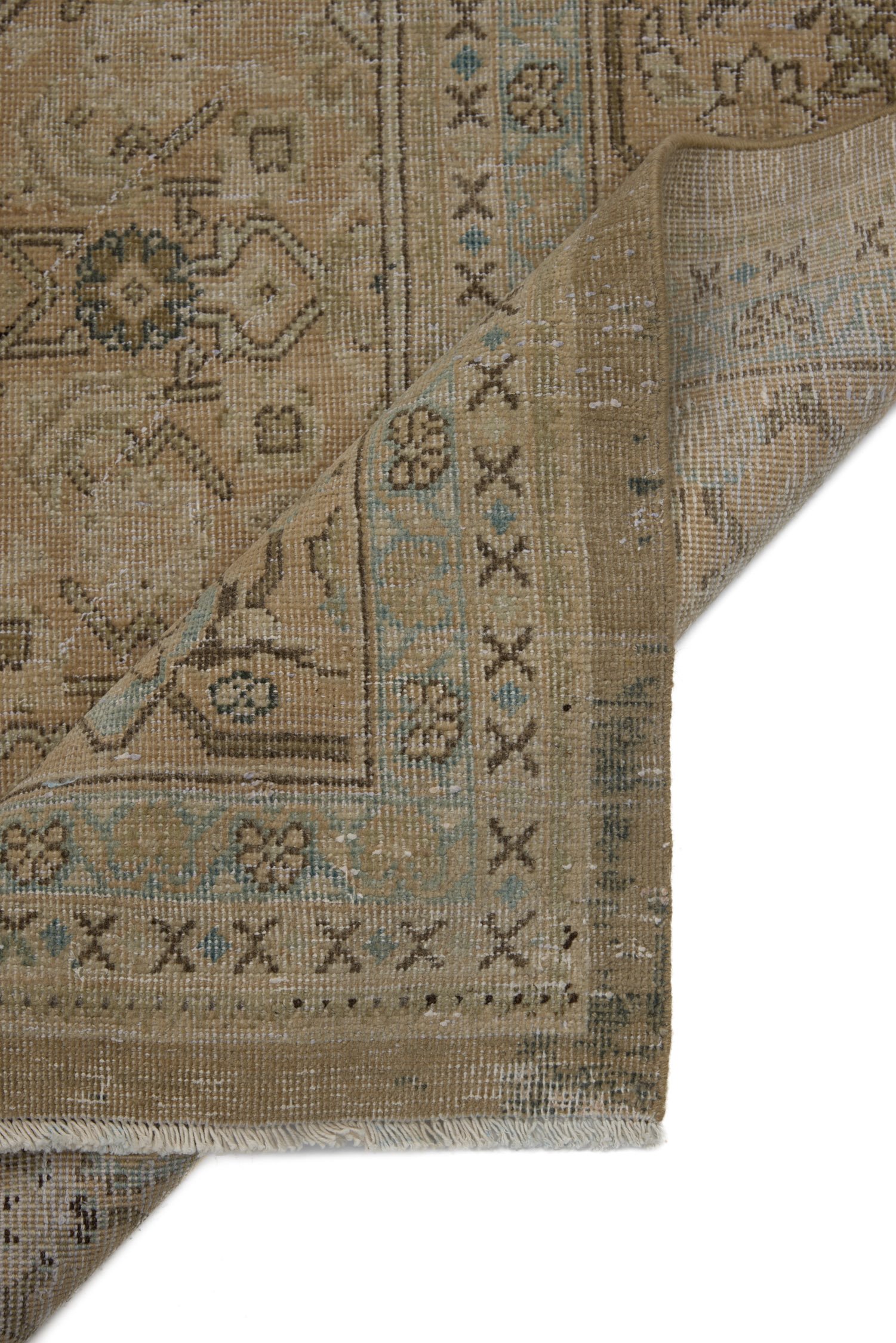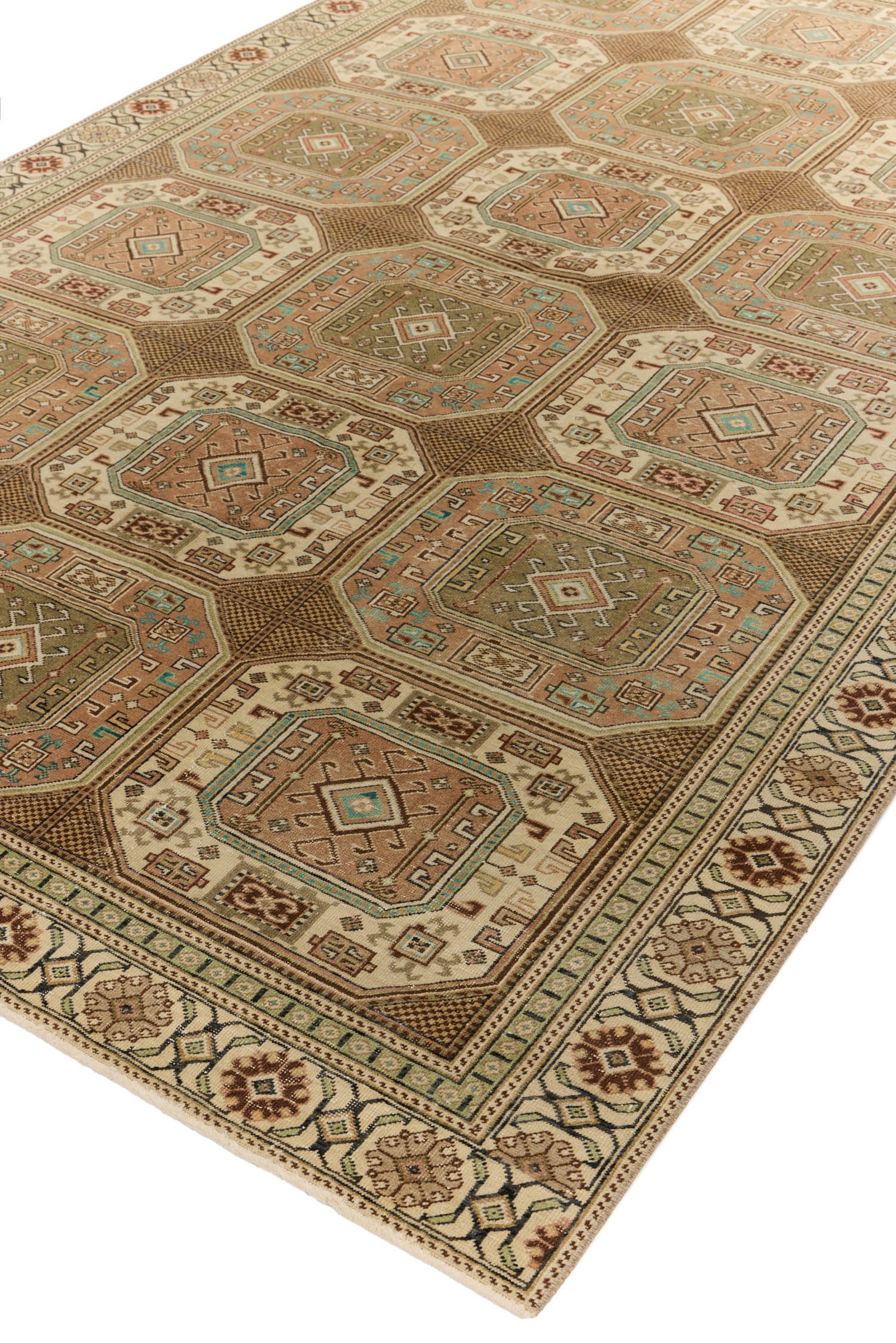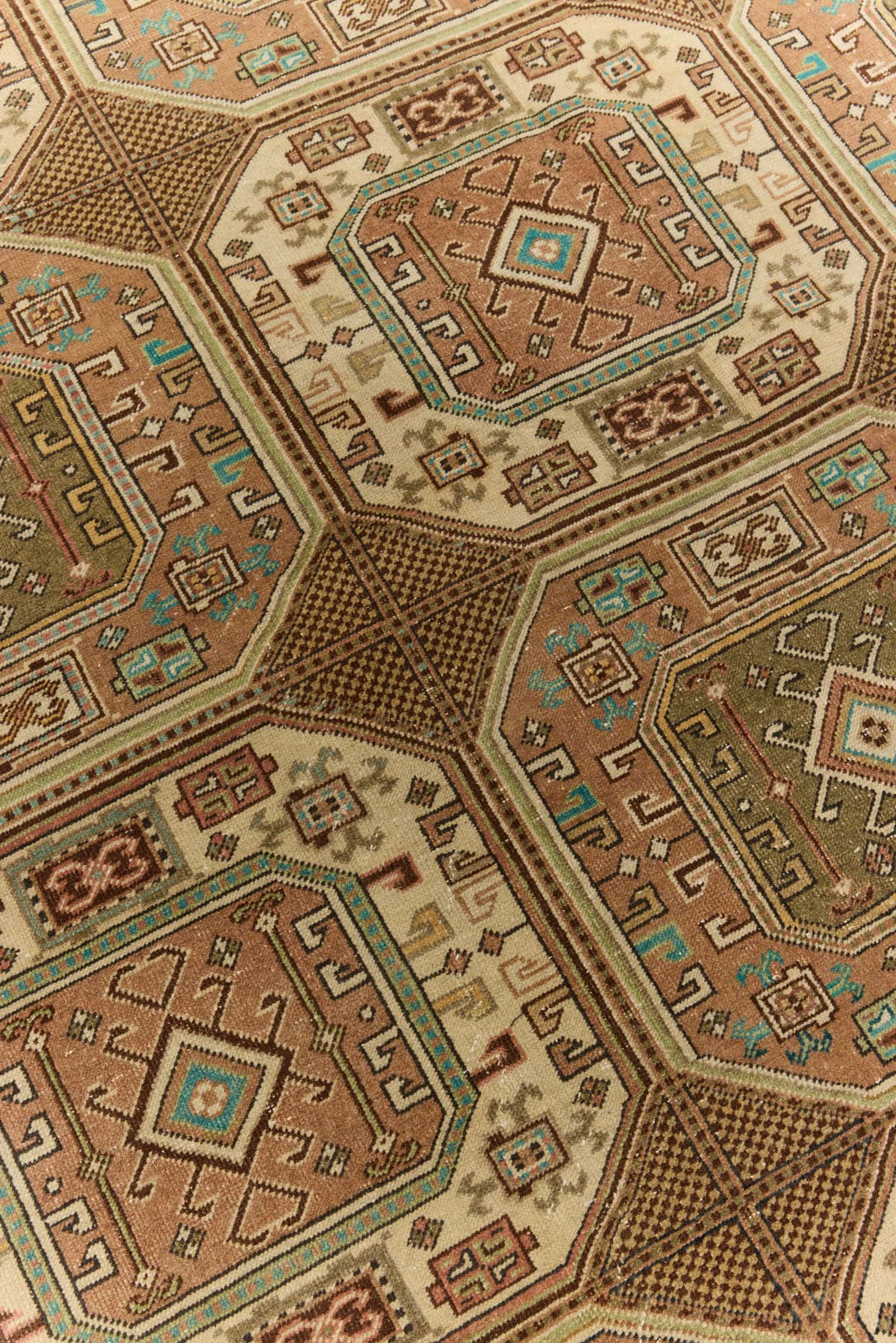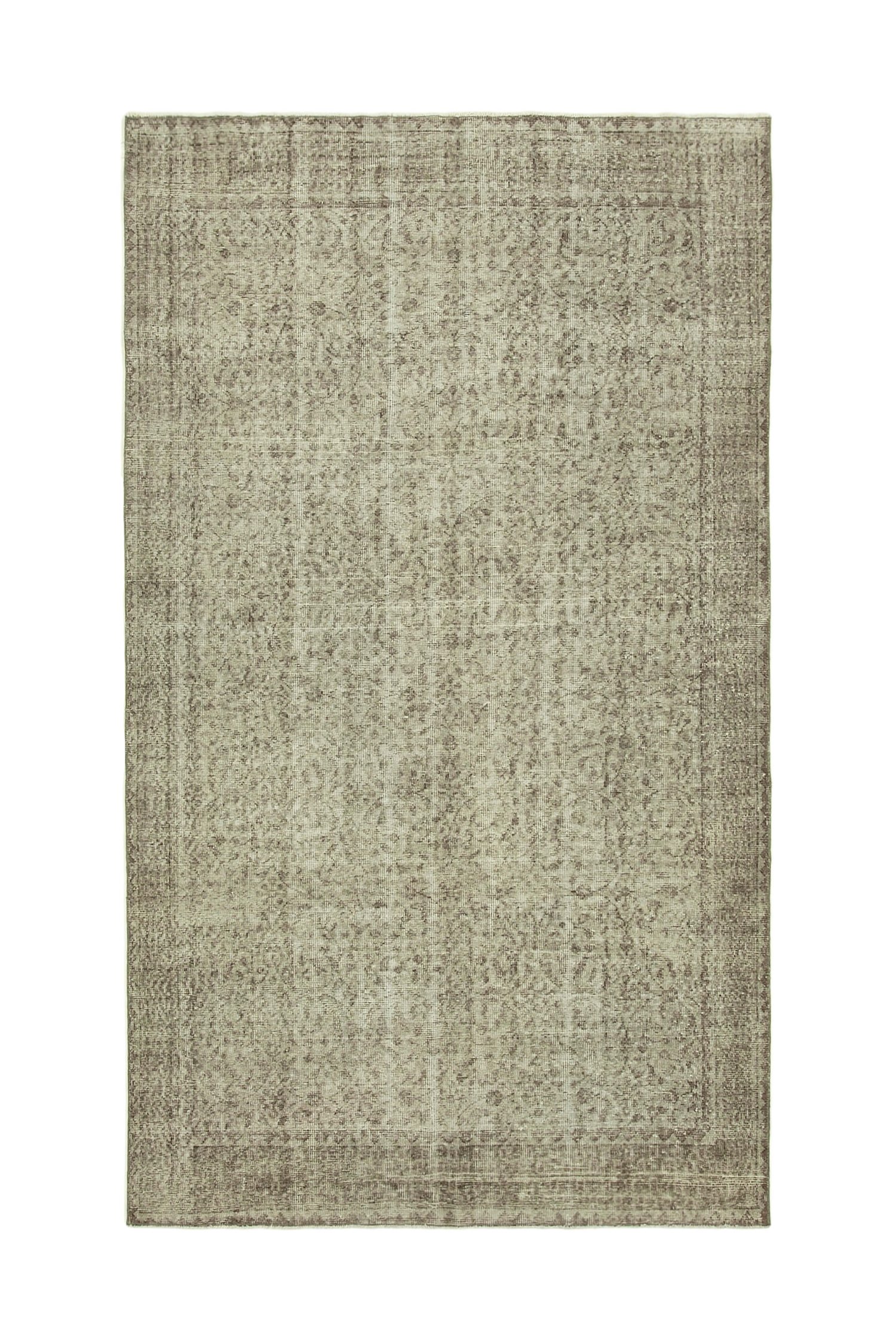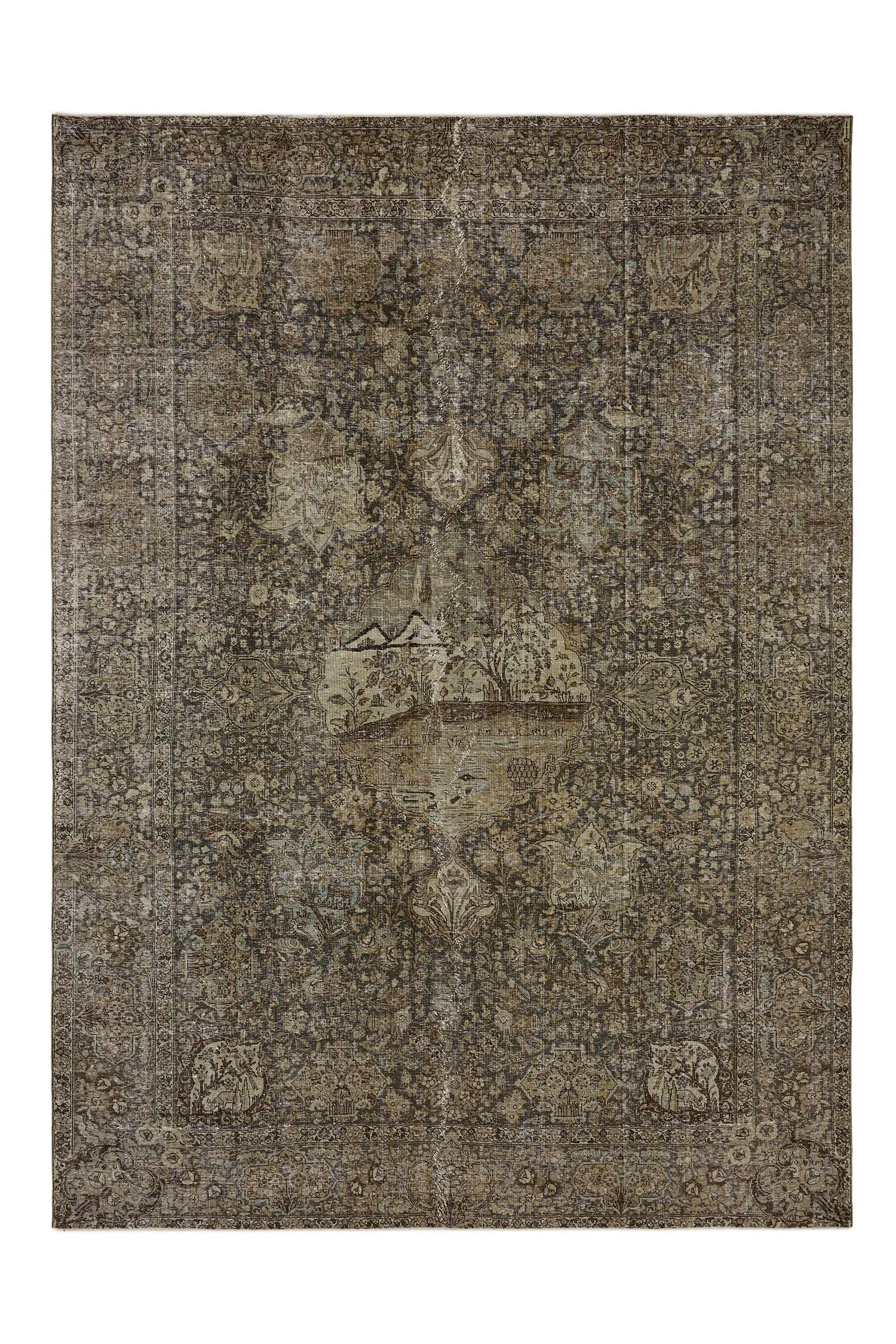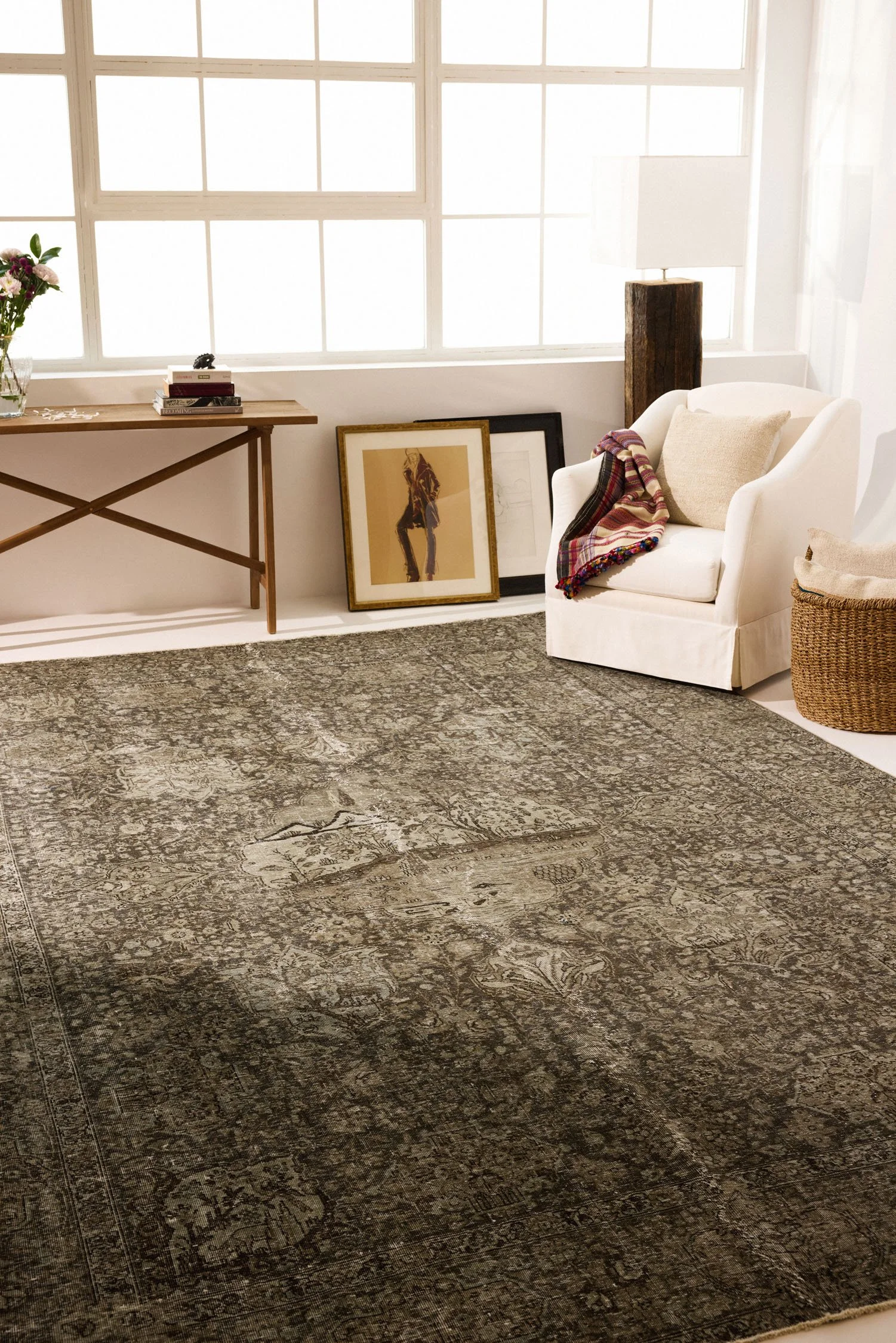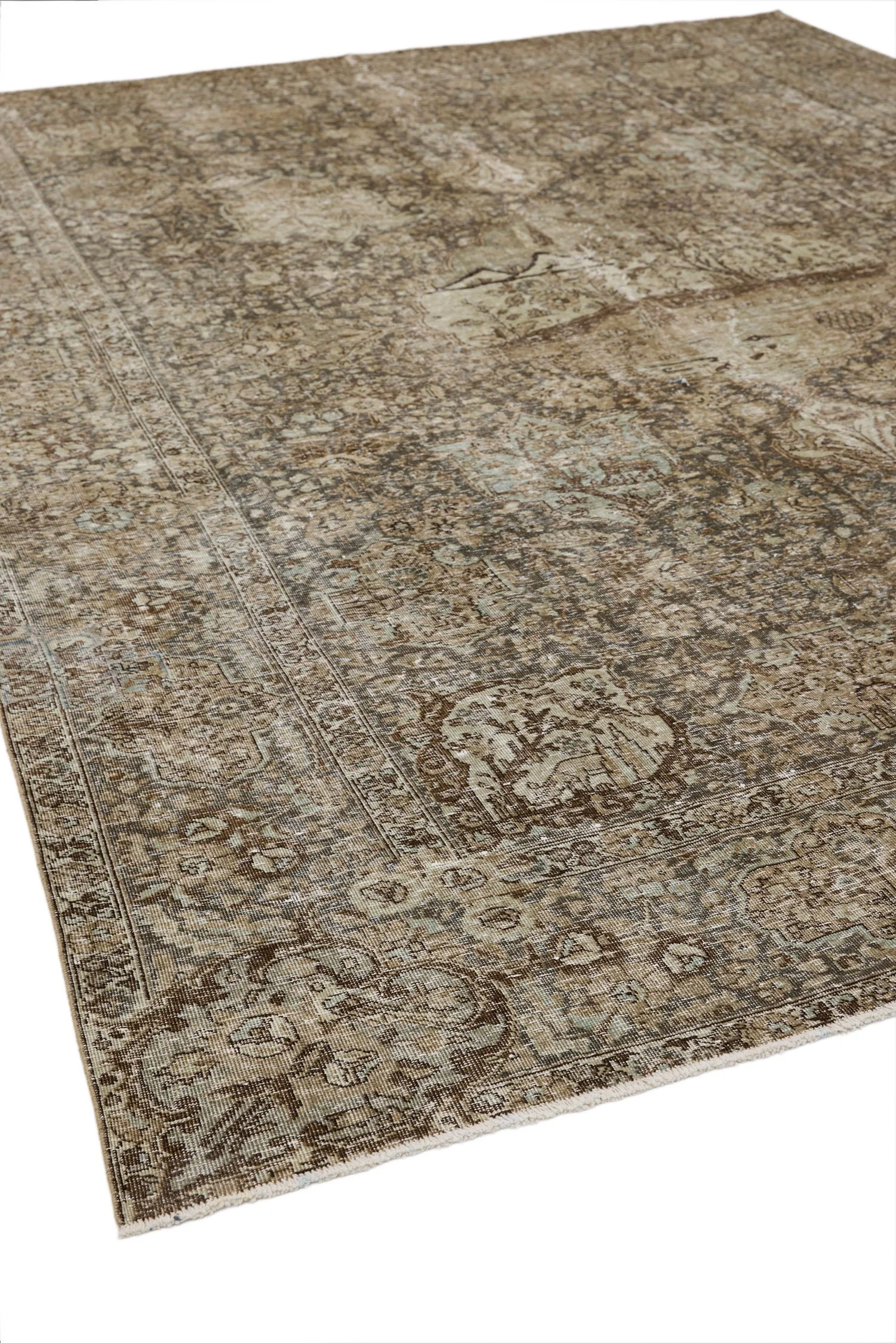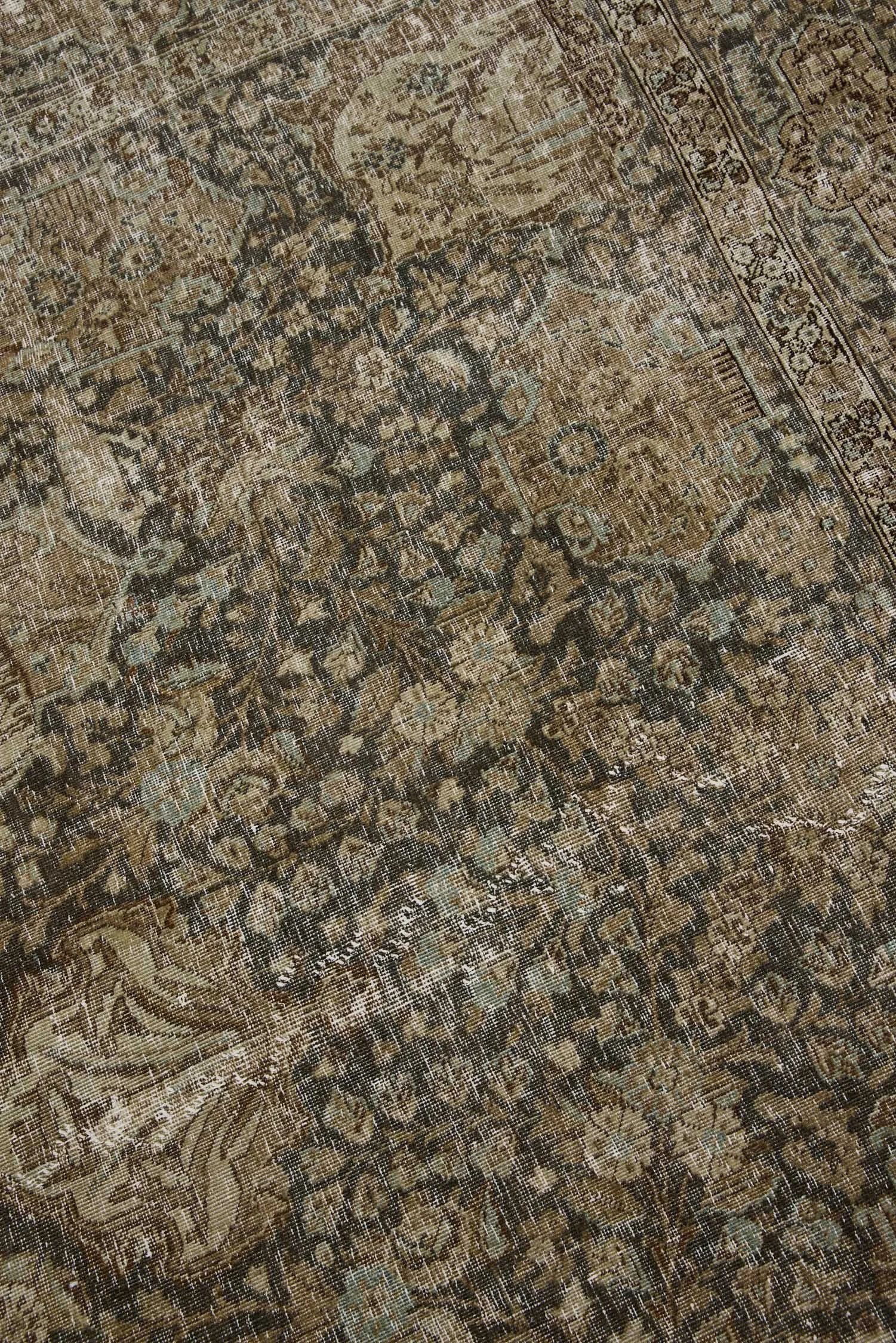Heritage and Craftsmanship
The Bakhtiari tribes of southwestern Persia developed their distinctive garden panel tradition as a way of preserving and sharing cultural narratives through textile art. Each compartment represents different aspects of their nomadic lifestyle and natural environment, creating rugs that function as both floor coverings and visual libraries of tribal heritage and storytelling traditions.
Design Elements
The garden panel layout divides the field into structured compartments, each filled with carefully chosen motifs that speak to specific cultural meanings and natural observations. Stylized florals represent the beauty of seasonal changes, cypress trees symbolize permanence and spiritual aspiration, while geometric rosettes add decorative rhythm throughout. The varied motifs within the systematic framework create visual movement that rewards extended viewing while maintaining overall compositional harmony.
Placement
The substantial 9'6" x 11'12" dimensions make this rug ideal for large living spaces, dining areas, or studies where its rich storytelling tradition can be properly appreciated. The deep walnut ground with teal and olive accents creates a sophisticated palette that anchors both traditional and contemporary interiors seeking authentic cultural depth.
Care Recommendations
To preserve the rug's beauty:
Rotate periodically for even wear
Vacuum regularly using a suction-only setting
Address spills immediately by blotting, never rubbing
Professional cleaning recommended annually
Avoid direct sunlight to maintain color integrity
Bakhtiari garden rugs represent one of Oriental carpet weaving's most successful narrative traditions, where tribal artisans created pieces that preserve cultural stories while serving practical household functions. Their distinctive compartmental designs continue to fascinate contemporary viewers with their unique blend of systematic organization and artistic freedom.




